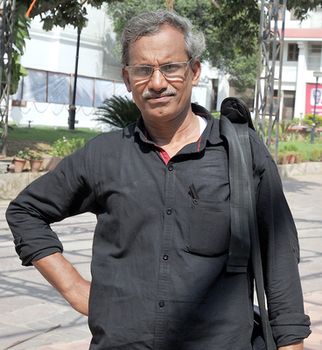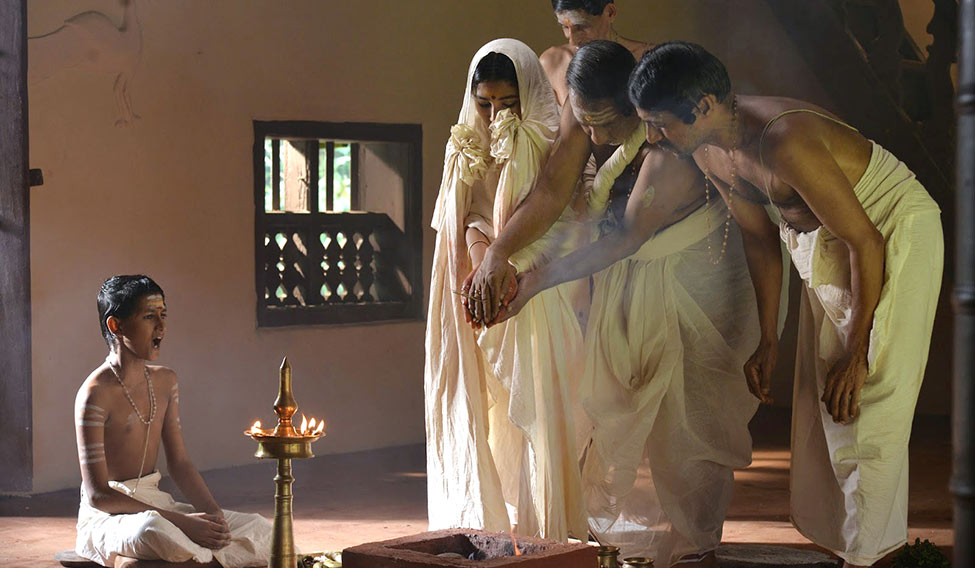The screen crackles alive to the sound of cicadas, and we are in the Kerala of the 1930s, getting a peek into the orthodox and rather stifling customs of Namboodiri Brahmins. For several moments, the narrative proceeds rather comfortably without dialogues. By the time the characters begin their speaking roles, the viewer is well immersed into the plot and she doesn’t realise they are speaking in Sanskrit.
G. Prabha’s debut feature film, Ishti, is in the classical language, which comes naturally to him, given that he taught Sanskrit for years at Chennai’s Loyola College. Prabha, who headed the college’s department of oriental languages, was fascinated by the visual media department and began dabbling with the camera some time ago. He produced two documentaries in Malayalam, Akkitham (2010) on the famous Malayali poet, and Agnaye in 2012 on a Vedic fire ritual. Post retirement, he decided to combine both his passions into a feature film.
 Making inroads: Director G. Prabha.
Making inroads: Director G. Prabha.
While Sanskrit is the root for a host of north Indian languages and has also enriched the vocabulary of Dravidian tongues, it hasn’t been the language of expression on screen. There are only three other feature films in Sanskrit, G.V. Iyer’s Sankaracharya (1983) and Bhagavad Gita (1993) and a biopic of Unnayi Warrier. Ishti is reportedly the first feature film in this language that deals with a social issue in a fictional narrative.
Calling Ishti a Sanskrit language film, however, is limiting its scope and doing the filmmaker injustice. Though made on a frugal budget with only Nedumudi Venu as a known name in the cast, Ishti has some great visuals. Using oil lamps and lanterns for illumination, the filmmaker creates interesting depths. The viewer is transported into an earlier era and absorbed in the plot which explores one uncomfortable societal norm after another. There is the child bride, the patriarch’s third wife, married for dowry to boost the household’s dwindling finances. There is his younger brother, who is not allowed any financial autonomy or say in the orthodox homestead. Then there is the new wave, the quest for education which the old guard resists.
“Cinema has a different language. It’s not necessarily what the actors speak. We use a visual language, and you’ll see that even without knowing Sanskrit or following the subtitles, you can follow the plot quite easily,” said Prabha.
Prabha had first approached Naseeruddin Shah for playing the role of the ageing Namboodiri patriarch, the central character in the film. “Shah was very interested in the project; in fact he insisted that he dub the dialogues himself. However, his Sanskrit rendering didn’t make an impact and he himself decided to step out of the project,” Prabha said. Venu later essayed the role.
Prabha knows his film is not for commercial dispensation. “No distributor will want to book a theatre for it. But it is available for private screenings,” Prabha said. The film premiered at Delhi’s Indira Gandhi National Centre for the Arts.







